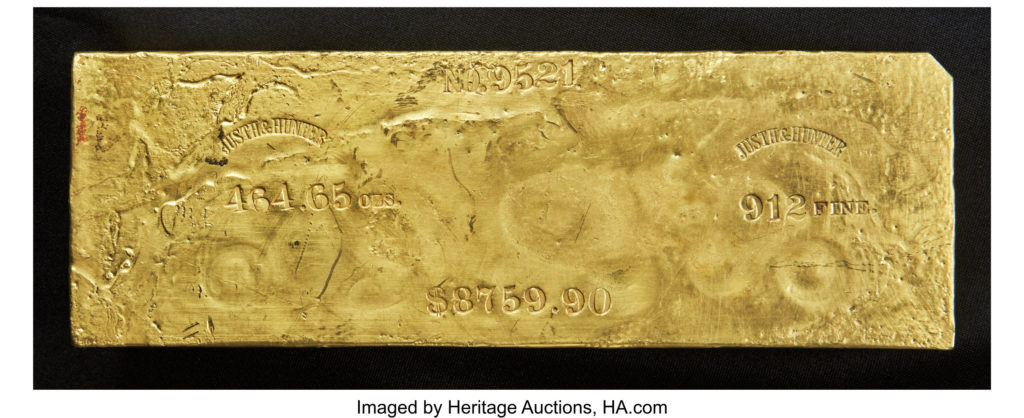The thought of melting down historical gold items for “melt value” would be crazy to most collectors. Then again, that is something we at least have to consider at a time that many high-end collectibles are viewed solely for the motive of profits. How big is a gold ingot for Heritage Auctions to announce it as extremely large on its auction site? Precious metals like gold have become their own category of collecting in the age of Cryptocurrencies and NFTs, however many collectors still regularly look to see where the price of where gold is at any given time.
Recovered from the S.S. Central America the Justh & Hunter Gold Ingot is 464.65 ounces of sold California gold. This is a price issue that is not likely to last before the auction ends, but the ingot currently has a bid that is not even at its melt value based on current gold prices.
Collectors Dashboard evaluates high-end collectibles as an alternative asset class. This means Gold Ingots unique in size are attracting the same capital that could have been invested into stocks or bonds. Many unique examples of collectibles now cost hundreds of thousands of dollars (or much more). Collectors with a passion to own the largest known example of gold ingot from a prominent gold rush era firm Justh & Hunter for years frequently have to compete directly against investors whose only desire is to make a profit in the future.
Image below by Heritage Auctions.

The current bid for the Justh & Hunter Gold Ingot, all 464.65 Ounces is $280,000.00 after 17 bids with 21 days remaining. The melt value with gold at $1,987.30 per ounce comes out to $923,398.94.
Documented as the largest Ingot from the Marysville Office, according to Heritage Auctions Marysville is the “Gateway to the Gold Fields”:
“The firm of Justh & Hunter opened an office in Marysville because of its proximity to the gold fields. Marysville is only 41 miles from Sacramento and the American River, the main digging grounds for prospectors during the Gold Rush. San Francisco was 87 miles from the gold fields, While that distance may seem insignificant today, given the poor roads in the 1850s, Marysville was considerably easier for miners to reach, so much so that Justh & Hunter as well as Harris, Marchand both set up assay businesses in Marysville, and both firms thrived.”
What are the odds that this huge ingot sells for less than the total melt value? Probably pretty low — but stranger things have happened.
Categories: Coins & Money


